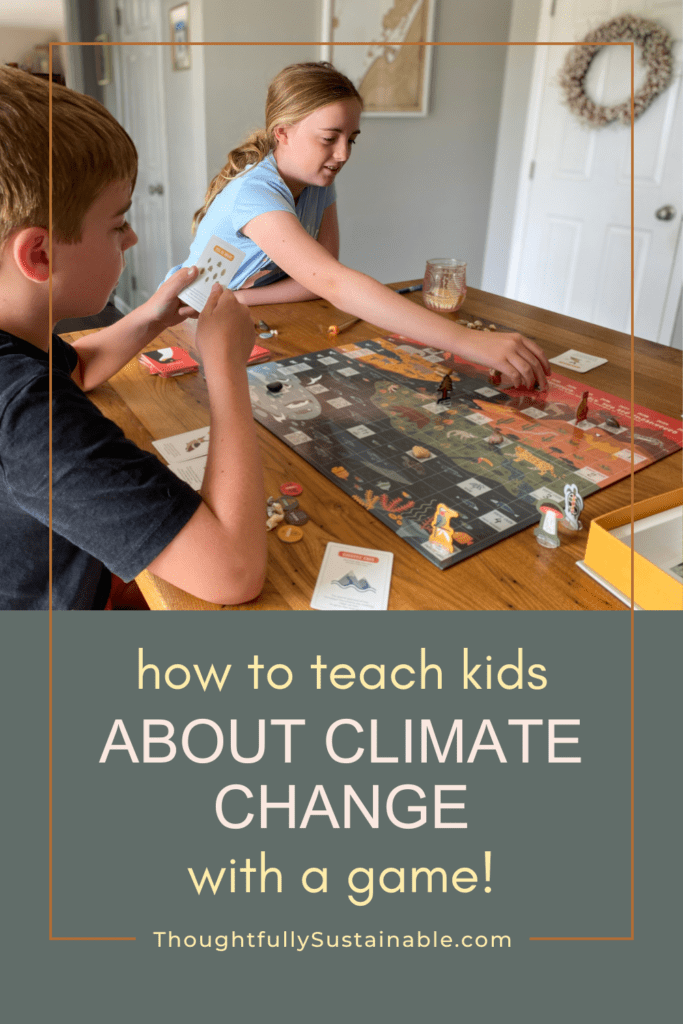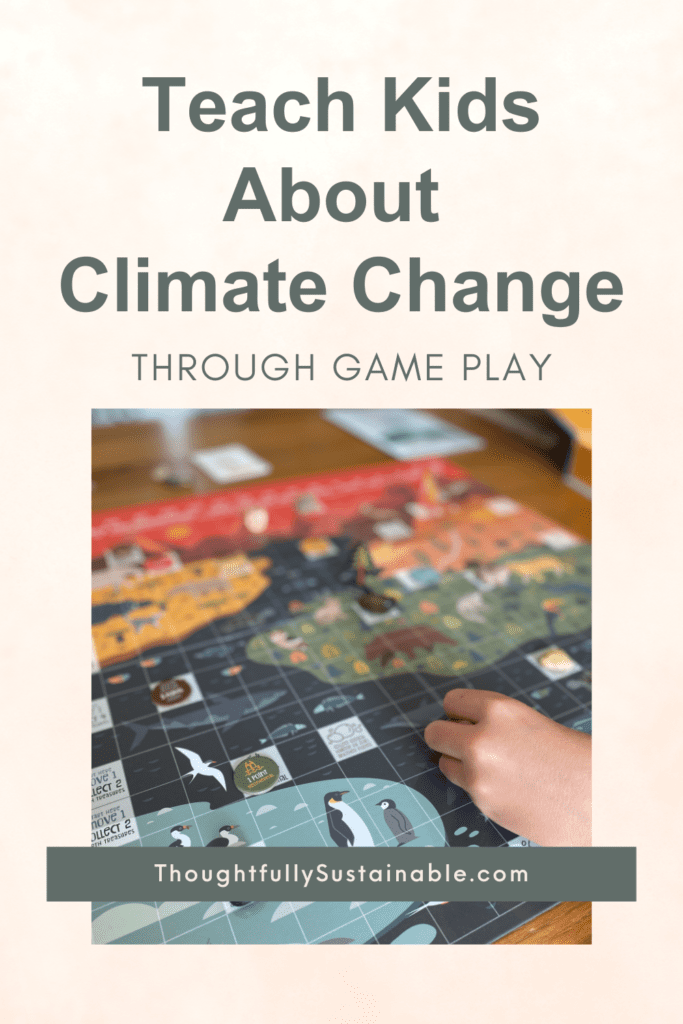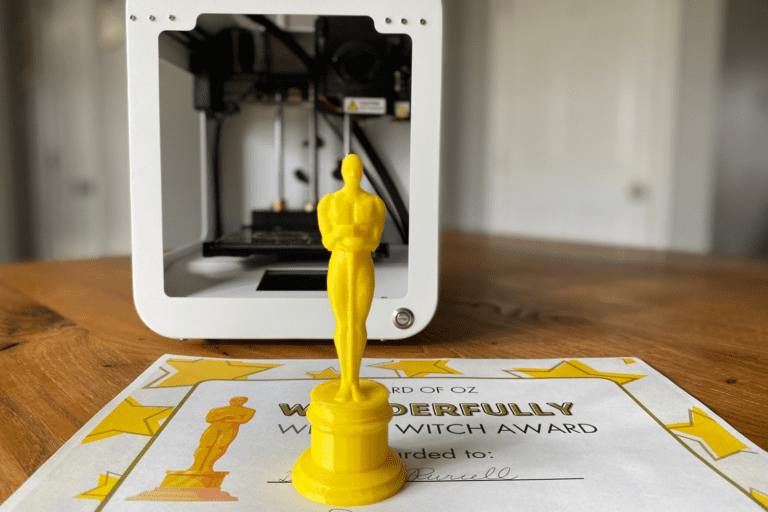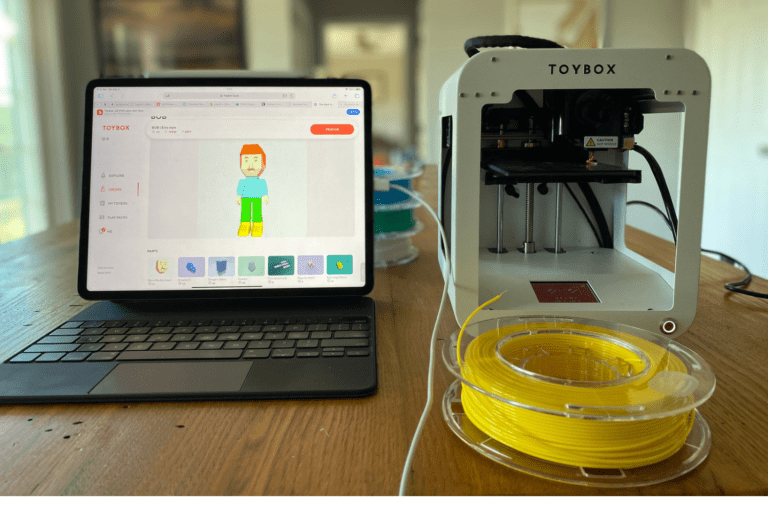How to Teach Kids and Families About Climate Change with the Earth Matters Game
Looking for a fun and age-appropriate way to teach students about the complexities of climate change? Play the Earth Matters board game to engage learners’ minds in science and sustainability concepts to understand the nuances contributing to our changing climate and how to work together to mitigate positive change for our planet.
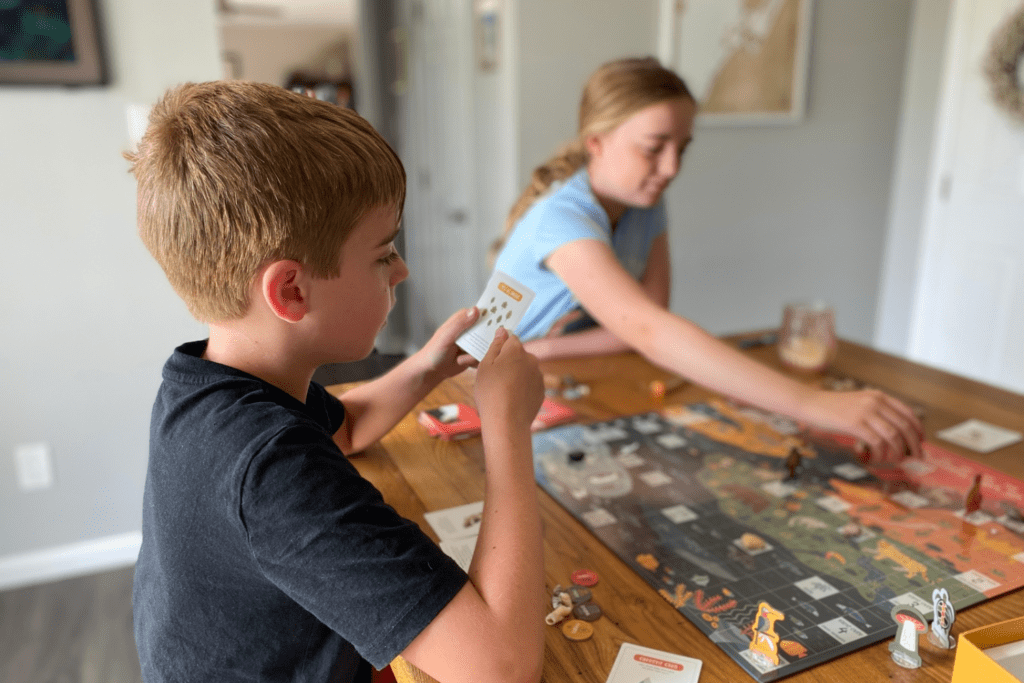
What is Earth Matters?
Earth Matters is a climate change board game designed to help children and families grasp the complexities of climate science through fun and interactive play. Designed for 2-5 players, ages 8 and up, the game offers an engaging experience for families, youth groups, and classrooms to navigate the multitude of factors contributing to climate change while providing real-world solutions to mitigate rising global temperatures.
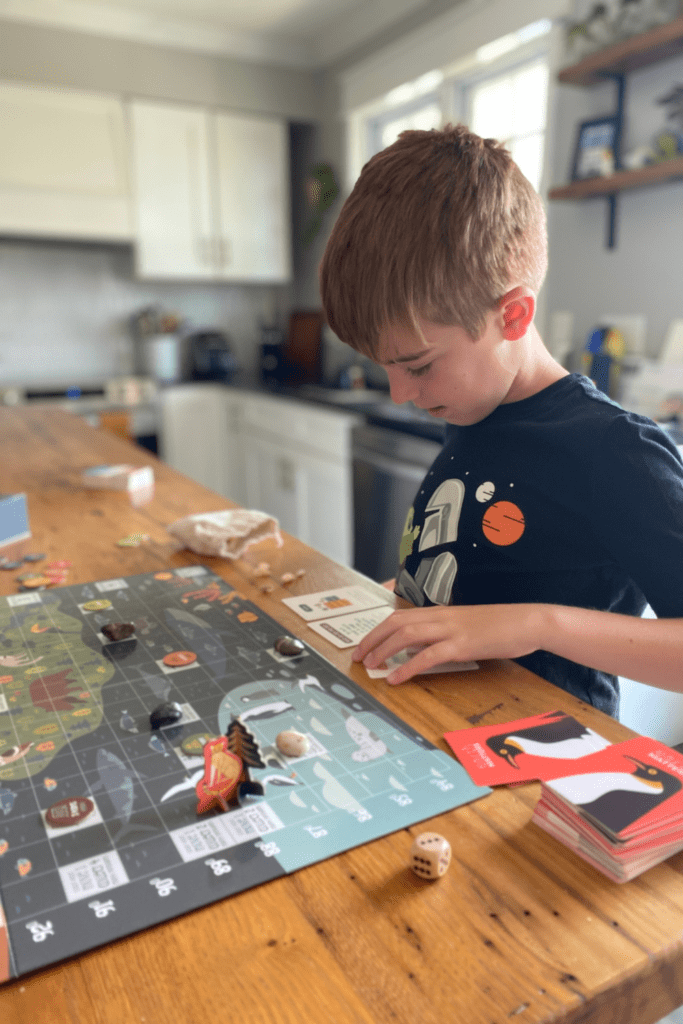
Why My Family and I Love Earth Matters
Explaining the nuances of climate change to children (or adults!) can be overwhelming and intimidating. But playing a game exploring the multiple factors contributing to climate change is not! Earth Matters is all about playing cards to manage your hand, collect tokens, and tell stories as you move your piece across different ecosystems.
My son and daughter are 8 and 12, and when we sat down to play Earth Matters for the first time, they were immediately engaged by the beautifully illustrated game board and playing cards. Choosing which player to be was fun, as options for player pieces include a cheetah (my daughter’s favorite), sea turtle, mushroom, redwood tree, and hummingbird. The game’s objective is to use playing cards to move from left to right across the board, collecting Energy tokens, Critical Rocks, and Earth Treasure shells, which all add up to victory points at the end.
Two sets of playing cards are included in the game: the penguin deck and the cheetah deck. The penguin deck is ideal for your first game. Once you’ve played the game a few times, play the cheetah deck for a new variety of questions. Within each deck are 6 different types of cards:
- Tell Us About
- Event
- Eco Action
- Current
- All Players Move
- Snapshot
The game has a cool, semi-cooperative vibe, with exciting event cards, role-playing prompts, trading actions, and effect cards that move you around the board. The goal is to rack up as many points as possible before the game ends.
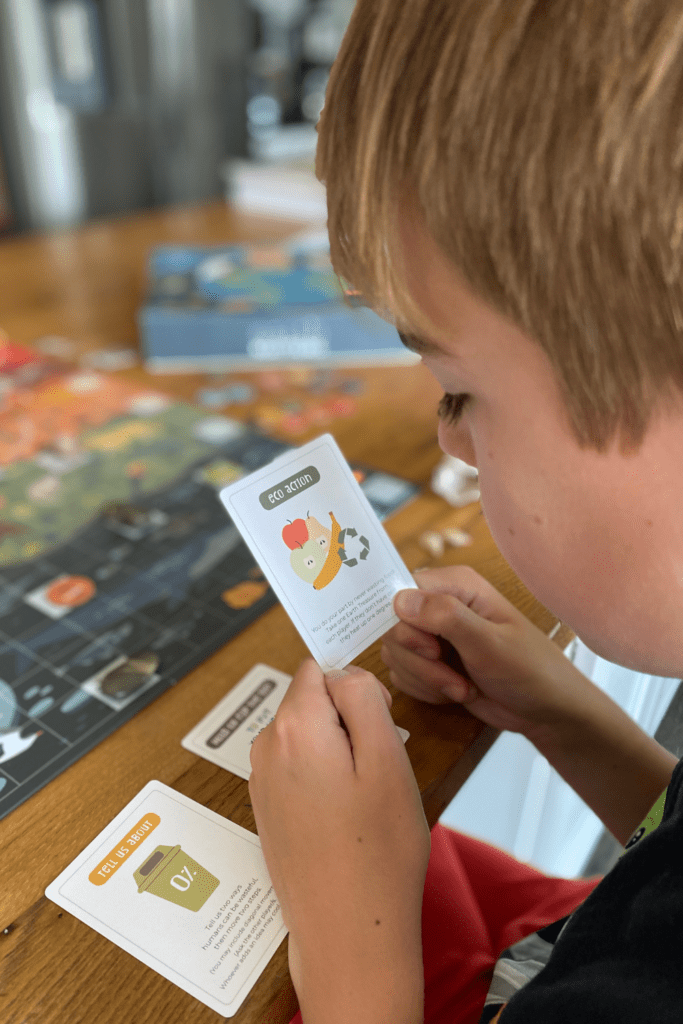
Each type of card allows the player to move vertically, horizontally, or diagonally to the right while conversing about various aspects of climate change. Here are a few examples of our favorite cards and how we apply them to gameplay:
- “Your school has a greenhouse, and you get to harvest the vegetables. Move two steps and collect one Earth Treasure.”
This card prompted my son to talk about the newly raised garden beds that his school built this year and how he was excited to see how many pumpkins grew. He moved his player piece two places horizontally to the right and earned an Earth Treasure, which is a small seashell collected for points.
- “Tell us two ways humans can be wasteful, then move two steps.“
My daughter drew this card and talked about throwing away food and putting cardboard in the trash when it could be recycled, reused, or composted. She moved her player piece two steps diagonally towards the right.
- “Growing food for billions of us is difficult. Hunger is too common. Give three Earth Treasures to the player with the fewest points. If that’s you, cool down one.”
Earning Earth Treasures from another player adds healthy competition to the game! Since the game board is set up using a time and temperature grid to simulate a changing climate, when the card says “cool down one”, that means that if you have the fewest Earth Treasures, you move your player piece vertically down the board one space.
As you can see, Earth Matters sparks lively chats about climate change with age-appropriate, curriculum-based topics. It also throws in some risk-reward strategy, pushing you for high-value tokens while risking losing everything. The game ends when someone reaches the furthest point into the future, and then you count up all the tokens to see who wins.
As a science teacher and a parent of elementary and middle school students, I think using game-based learning to teach kids about climate change is brilliant!
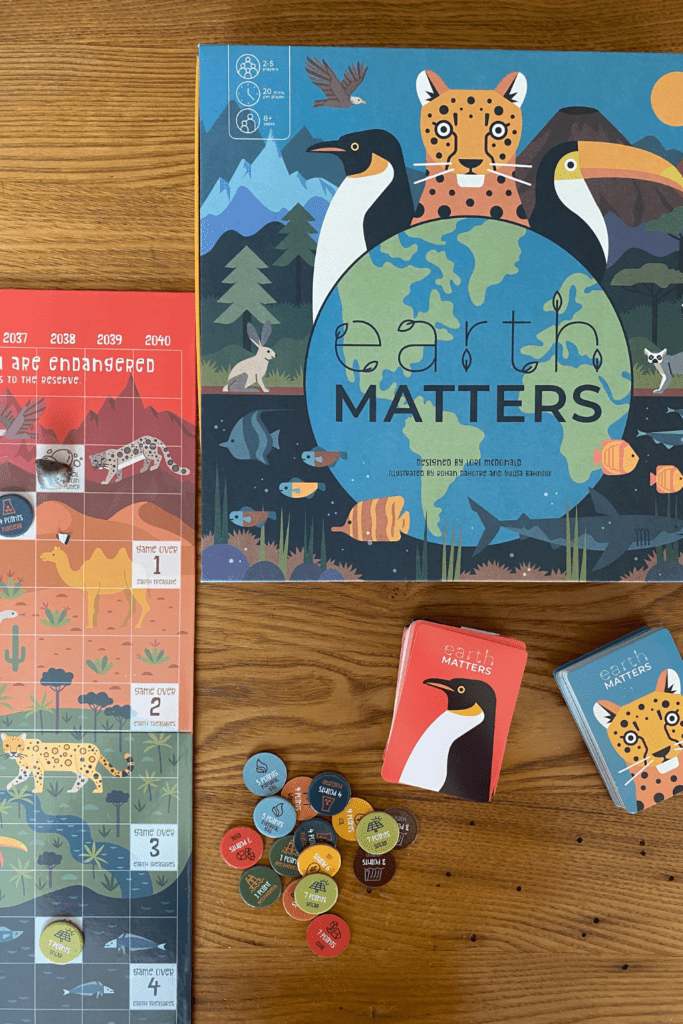
Using Game-Based Learning to Teach Climate Change
Using games to teach concepts is called “game-based learning” or “gamification.” Gamification involves incorporating game elements, such as point scoring, competition, and rules of play, into educational activities to enhance learning and engagement. Additionally, “game-based learning” is used when entire games are explicitly designed with educational purposes in mind, aiming to teach particular concepts or skills through gameplay.
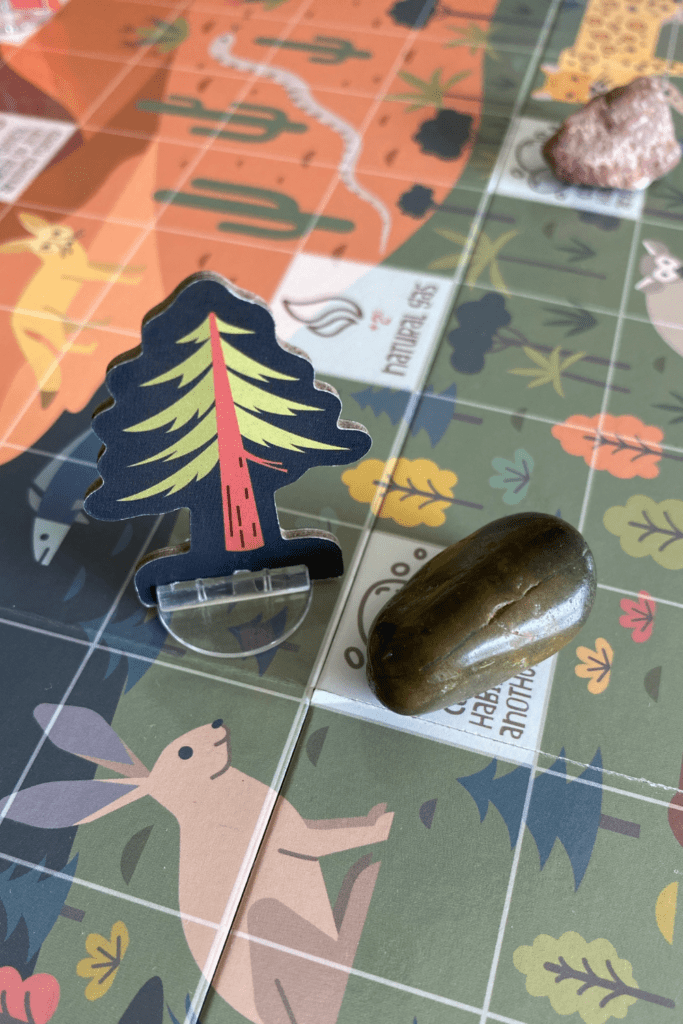
Benefits of Game-Based Learning
Game-based learning offers several benefits for kids, including:
- Increased Engagement: Games are inherently engaging and can capture children’s attention more effectively than traditional learning methods, making the learning process enjoyable.
- Motivation: Game reward systems, such as points, badges, and levels, can motivate children to persist in their learning tasks and strive for improvement.
- Improved Retention: The interactive and hands-on nature of games can help reinforce concepts and improve memory retention by providing practical application and repetition in an enjoyable format.
- Development of Critical Thinking and Problem-Solving Skills: Many games require players to think critically, strategize, and solve problems, helping children develop these essential cognitive skills.
- Collaboration and Social Skills: Multiplayer and cooperative games encourage teamwork and communication, fostering social interaction and the development of interpersonal skills.
- Personalized Learning: Games can be tailored to individual learning styles and paces, allowing children to progress at their own speed and receive instant feedback tailored to their performance.
- Safe Environment for Failure: Games provide a low-risk environment where children can experiment, make mistakes, and learn from them without fearing real-world consequences.
- Interdisciplinary Learning: Many educational games integrate multiple subjects, allowing children to see the connections between different areas of knowledge and apply what they’ve learned in various contexts.
- Encourages Creativity: Many games offer creative outlets, such as building, designing, or storytelling, which can help children develop their imagination and creative thinking skills.
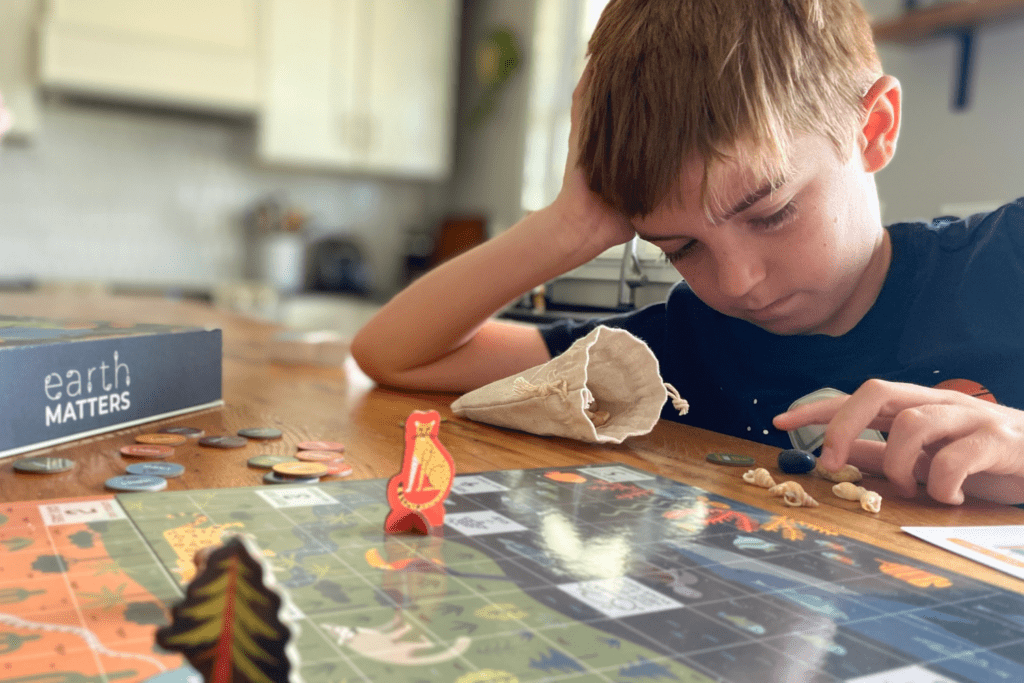
Earth Matters: Designed by an Educator for Educators
When looking for a game that can be used to teach children about climate change at home or in the classroom, the best place to start is to ask an educator. You’ve struck metaphorical gold when you find a game developed by an educator for educators!
Meet Lori McDonald, Earth Matters’s designer, a former art educator, and a founding member of Soldier Hollow Charter School. When asked about the inspiration behind her game, Lori says,
“With so many global problems calling for action, Earth Matters and my work in education are my humble attempts at paying my dues. Being a consumer has never meshed with my values. Everything is connected. I appreciate the chance to contribute to the conversation with the belief that we work to protect what we value.”
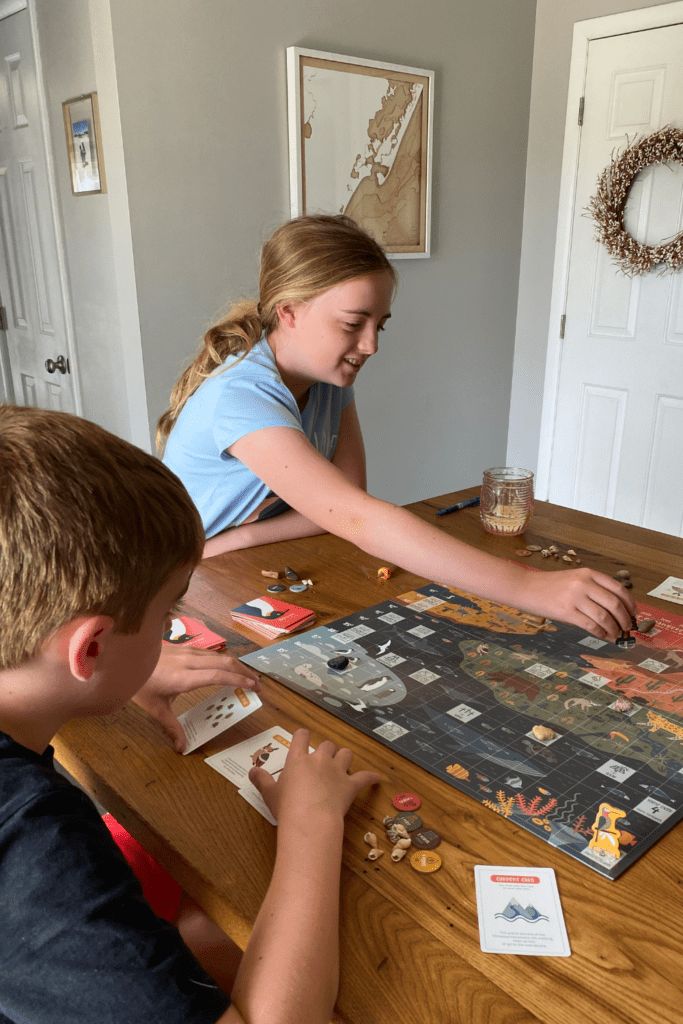
How to Use Earth Matters to Teach Kids and Families About Climate Change
Since game designer Lori McDonald is a former art teacher, not only did she create an educational game that is beautiful to look at and fun to play, but she also provided teachers and parents with a free curriculum guide to accompany Earth Matters. Complete with learning objectives, Common Core Standards, and a lesson plan, the curriculum guide provides seamless integration into your classroom or home learning environment.
Learning Objectives Addressed with Earth Matters
What learning objectives can be met by playing Earth Matters with your students? Here is a list of 6 main objectives addressed in the game:
- To support learning outcomes in language arts, science, and social studies.
- To empower students to learn about environmental issues through discussion.
- To introduce and support climate change education.
- To provide content with personal relevance to students’ daily lives.
- To encourage an open and questioning mind toward ideas and alternative points of view.
- To foster appreciation, new insights, and, ideally, stewardship of the natural world.
Common Core State Standards Addressed with Earth Matters
If your school requires alignment of curriculum with common core standards, here are the areas that can be addressed by playing Earth Matters in your classroom:
Foundational Skills Grades 4 and 5
- Phonics and Word Recognition RF3
- Fluency RF4a, RF4c
Speaking and Listening Grades 4 through 8
- Comprehension and Collaboration SL1b, c, d and SL3
- Presentation and Knowledge of Ideas SL4, SL6
Language Grades 4 through 8
- Knowledge of Language L3a, L3c
- Vocabulary Acquisition and Use Literacy 4a, 4c, Literacy 6
History/Social Studies Grades 6 through 8
- Integration and Knowledge of Ideas RH6-7, RH 6-8
Science and Technical Subjects Grades 6 through 8
- Key Ideas and Details RTS1, RTS2
- Integration of Knowledge and Ideas RTS8
Variations of Gamy Play in the Classroom
Time for game play can be limited in a classroom, which is why Earth Matters has multiple variations built into It to integrate the game into your teaching timeframe!
- Timed Play: Decide how long you would like to play. Let each player finish their turn when the time is up, then add your points.
- Fast-Paced Strategic Play for Two or Three Players: Roll the die, move, and then play a card for each turn.
- Play with More Options: Try four cards in hand instead of three to maximize point scoring and movement across the board to a Game Over space.
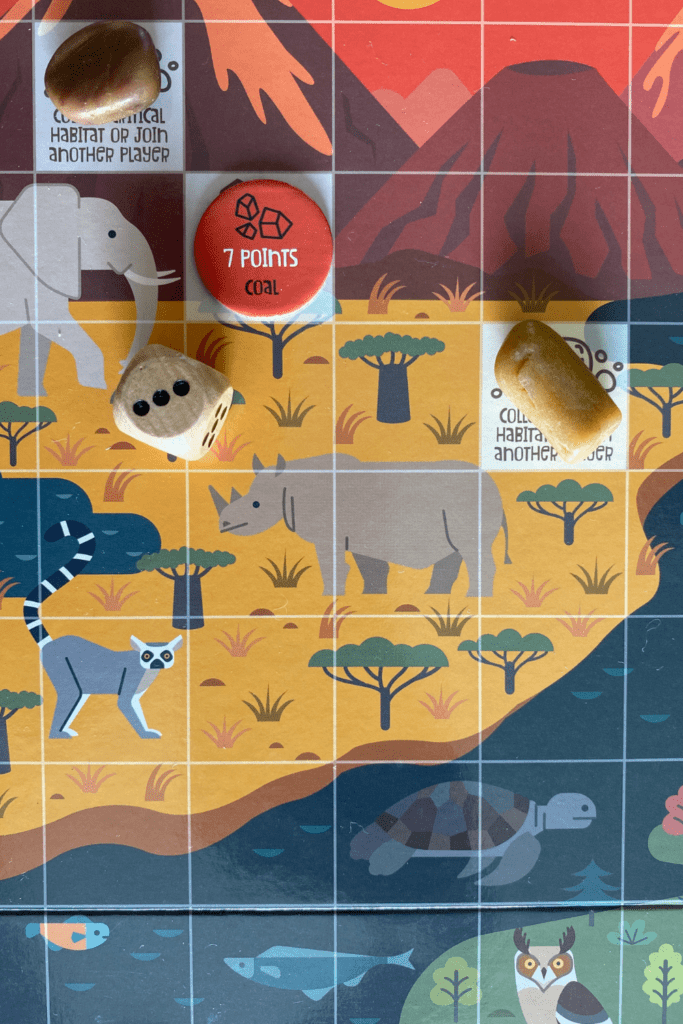
Earth Matters is Made with Sustainability in Mind
If you create a game board that teaches kids and families about climate change, the concepts taught should be reflected in the product. That’s precisely what the design team of Earth Matters did. The game and its paper components are printed on Forest Stewardship Council (FSC) paper using water-based inks and zero plastics. The award tokens consist of small rocks and seashells—a true integration of nature play!
The game board, cards, and player pieces are beautifully illustrated by Rohan Dahotre and Yuliia Bahniuk, two nature enthusiasts based in India. Both artists use their artistic talents to bring awareness to problems our planet faces, while simultaneously celebrating the beauty of nature.
The creative team of Earth Matters encourages players to pass on their game when finished, mentioning schools, libraries, friends, and community organizations as possible recipients. Imagine a child stumbling upon this amazing game in their local free little library? Amazing!
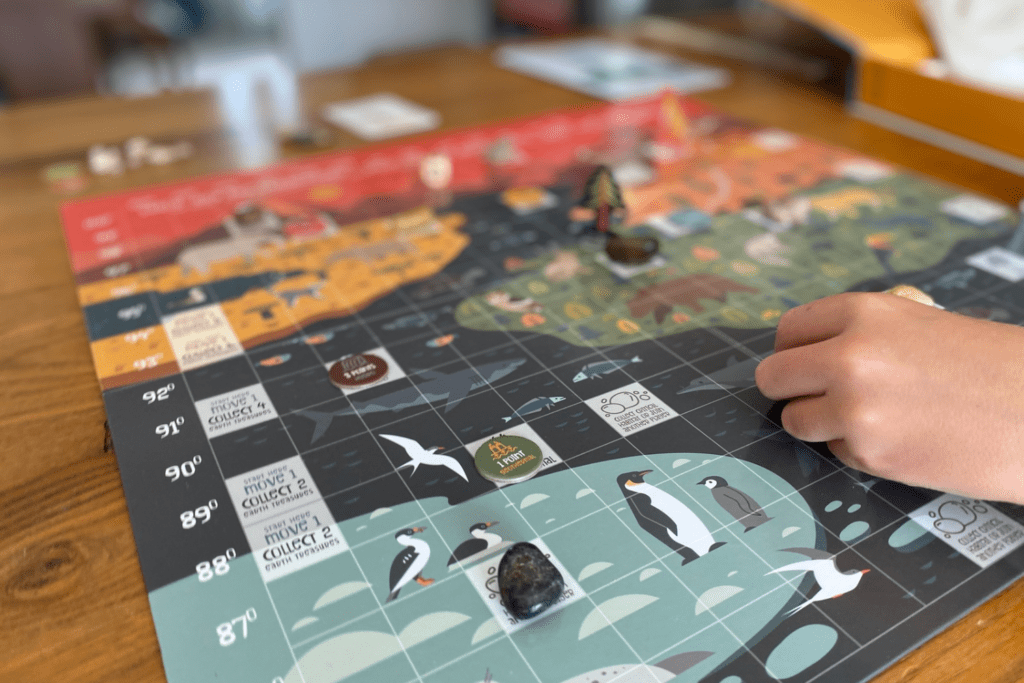
Where to Purchase Earth Matters for Your Home or Classroom
Ready to try out Earth Matters for yourself? You can purchase the game from the Earth Matters Game website in multiple bundles: a single game, a four-game classroom set, or a five-game classroom set. If you want to purchase the game in bulk for an entire school, contact Lori and her team directly. With every purchase, 20% of profits are donated to environmental organizations working to benefit biodiversity and environmental advocacy.
Have you used game-based learning to teach climate change concepts? I’d love to hear about it in the comments below!

